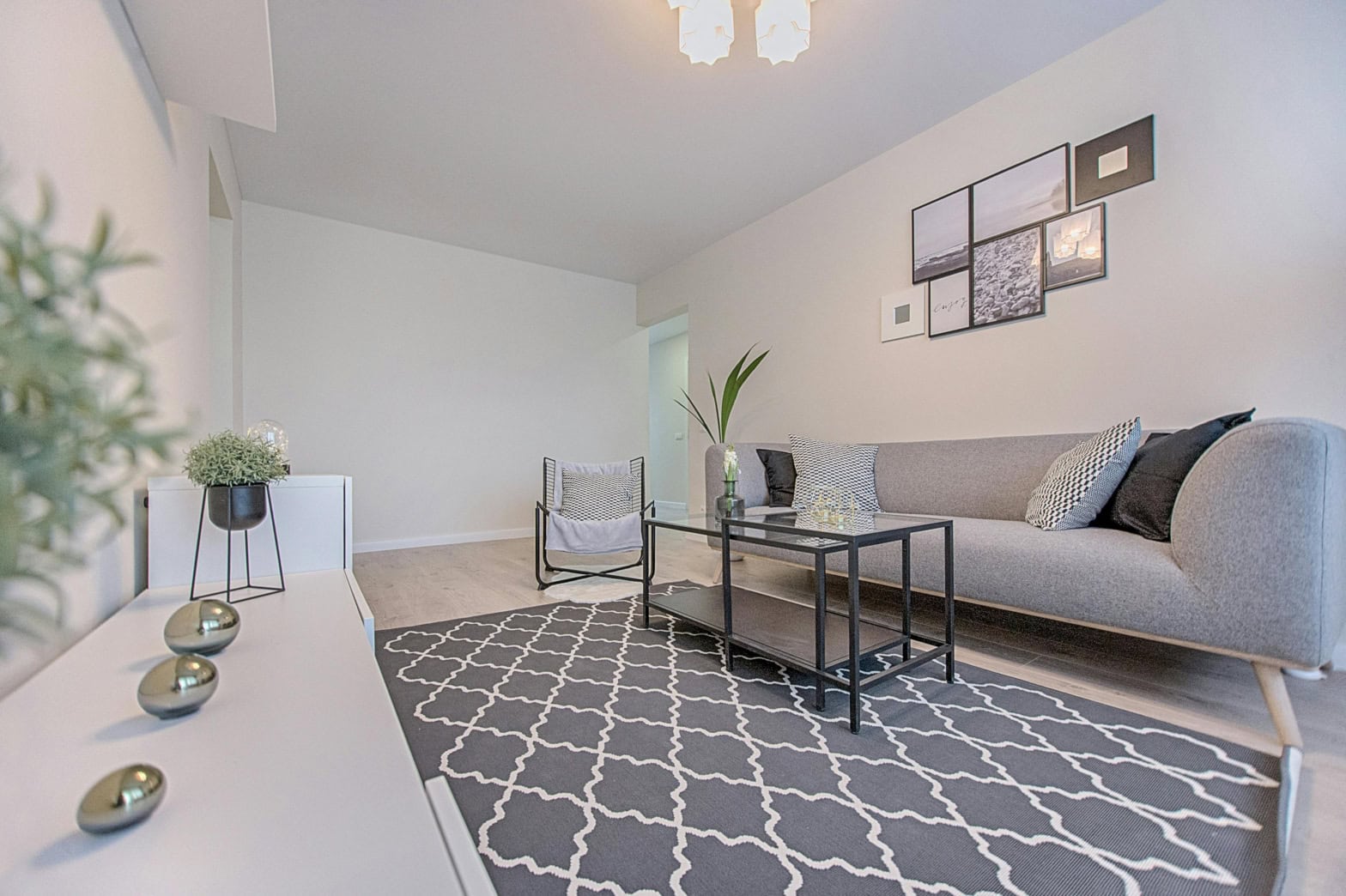What is a home equity line of credit (HELOC)?
In Canada, a home equity line of credit otherwise known as a HELOC, is a line of credit secured by your property. It allows you to borrow money through a lower interest rate, compared to other types of loans. It is traditionally viewed as less risky to the lender, versus an unsecured line of credit.
According to the Mortgage Professionals Canada market report, 32% of homeowners with a mortgage have a home equity line of credit. The top 3 reasons for getting a home equity line of credit were:
- Home renovations: Using a HELOC to pay for contractors and supplies (33%)
- Debt repayment: Consolidating debts to take advantage of a lower HELOC rate (29%)
- Investments: Tapping into home equity to diversify investments (24%)
What types of home equity lines of credit (HELOC) are there?
There are two types of HELOC products to consider, a readvanceable mortgage and a standalone mortgage.
Readvanceable mortgage:
A readvanceable mortgage is only available if you get your mortgage and home equity line of credit with the same mortgage lender, and your total credit limit is combined. The biggest benefit of a readvanceable mortgage is that as you pay down your mortgage principal, your HELOC limit increases by an equal amount.
Examples of a re-advanceable mortgage include the TD Bank Home Equity FlexLine mortgage or Scotiabank Scotia Total Equity Plan (STEP) mortgage.
Still not sure how a re-advanceable mortgage works? Here’s an example:
- You get a $300,000 mortgage and $100,000 home equity line of credit (HELOC) limit on a property with $500,000.
- After making regular mortgage payments for 5 years, your mortgage balance would be paid down to $265,000 and your HELOC limit would be $135,000. Your total credit limit of $400,000 remains constant.
Standalone mortgage:
With a standalone mortgage, you’ll have a set credit limit that doesn’t change, even as you pay down your mortgage.
Here’s an example of how a standalone mortgage works:
- You get a $300,000 mortgage and $100,000 home equity line of credit (HELOC) limit on a property with $500,000.
- After making regular mortgage payments for 5 years, your mortgage balance would be paid down to $265,000 and your HELOC limit would remain $100,000. This brings your total credit limit down to $365,000.
- However, you can increase your credit limit if you submit a new mortgage application for a higher limit, which means you’ll have to re-qualify.
In both scenarios for a re-advanceable mortgage or a standalone mortgage, you can also re-qualify for a higher home equity line of credit amount if your property value appreciates. To do so will require a new mortgage application. The main benefit of having a re-advanceable mortgage is that you can secure a credit amount without needing to re-qualify.
What are the pros and cons of a home equity line of credit (HELOC) vs. other loan products?
There are several benefits to using a home equity line of credit, especially when comparing it to other higher interest rate products such as personal loans, unsecured lines of credit or credit cards.
- Lower cost of borrowing: As of August 2022, a typical HELOC rate today would be around 5%. An unsecured line of credit or personal loan is around 9%, so you save around 4% on the interest rate. Credit card interest rates can easily be above 20%, so the savings relative to that is even larger.
- Access to capital: Most unsecured lines of credit or personal loans will max out around $50,000 depending on your lender. There is no dollar limit to your home equity line of credit if your property value supports it, and assuming you qualify.
The downsides of a home equity line of credit include:
- Being harder to qualify for and a longer approval process: Personal loans are typically approved within 24 hours. In contrast, a home equity line of credit application is identical to a mortgage application, and can take several weeks to hear back from the lender.
- More expensive to set up: If you have a mortgage with another lending institution, the new lender may not be comfortable giving you a home equity line of credit unless you switch everything to them or agree to pay out the mortgage. This would incur penalties to break your mortgage and legal costs to refinance your mortgage to the new lender you want the HELOC with. You should consult your mortgage advisor to see if the economics of doing so make sense.
What are the pros and cons of a home equity line of credit (HELOC) vs. a mortgage?
When deciding on the right mortgage, be aware that many mortgage lenders also offer a home equity line of credit (HELOC).
You can decide what combination of mortgage and HELOC works best, based on your financial scenario. Here are some of your available mortgage options:
- Get a mortgage with no HELOC
- Get a mortgage and HELOC, or
- Get only a HELOC with no mortgage
With a home equity line of credit, you can go up to the lesser of:
- 65% of your property value, or
- 80% of your property value minus your mortgage amount
Note: This limit starts to decrease as property values climb above $1.5M, but we won’t get into that here. When in doubt, it’s best to consult your mortgage advisor for guidance.
For example:
- Your home is worth $700,000 and you have a $200,000 mortgage. That means you could get a $360,000 HELOC ($700,000 x 80% – $200,000)
- If you have that same home with no mortgage, you could get a $455,000 HELOC ($700,000 x 65%)
If you are buying a property with less than 20% down payment, you can’t get a home equity line of credit, since there isn’t any available equity in the property yet.
Other benefits of a home equity line of credit:
- No prepayment penalties: With a mortgage, you can typically prepay 10-20% of your mortgage principal each year without penalty. Anything beyond that is subject to a penalty because it’s a “closed” mortgage. A home equity line of credit is an “open” mortgage, meaning you can pay off the entire amount at any time without penalty. So if you plan on needing the balance for a short term, or anticipate repaying the loan fairly quickly, a HELOC can be beneficial for this.
- Interest charged only on the drawn amount: You only pay interest on a home equity line of credit if you draw on the balance, otherwise it costs you nothing. This differs from a mortgage, where you draw down the entire mortgage upfront and pay interest on the full amount over your mortgage term.
- Lower monthly payments: A HELOC will require a minimum payment of the interest each month, but no payment towards the principal needs to be made. A mortgage has a set payment schedule with principal and interest payments, and as a result, has a higher monthly payment than a HELOC typically would. Note: Only making interest payments means you will pay more interest over time, but if you’re strictly looking at cash flow (like many investors do) then a HELOC can be quite advantageous.
To qualify for a home equity line of credit is largely the same process as qualifying for a mortgage. One downside of a home equity line of credit: The HELOC rate is typically 0.80%-1.40% higher than a comparable 5-year variable mortgage rate, so there is a premium that you pay for all of these perks.
How can I use a home equity line of credit?
At a high level, here are some of the ways you can use a home equity line of credit strategically:
- Maximizing cash flow
- Leveraged investing (including rental properties)
- Helping your family enter the housing market
- Retirement planning to capitalize on your current qualifying income
- Construction or renovations financing
Many of these scenarios can be complex and should be reviewed with a mortgage advisor before diving in.
Can I get a HELOC on an investment property?
Yes. You can get a home equity line of credit on your primary residence or on an investment property. Whether you reside in the property full-time, occasionally or not at all has no impact.
Can I use a HELOC for a down payment to buy another property?
Yes, provided you have enough equity in your current home and qualify for a home equity line of credit. You are allowed to use a HELOC for a down payment to buy another home.
How do I get a home equity line of credit?
As an existing homeowner:
Sign up to Perch and see what home equity is available. We’ll help you understand and plan for the right time to get a home equity line of credit and how to use it strategically. Typically, you can get a home equity line of credit by switching to a mortgage lender that offers one, either by breaking your mortgage early or waiting until your mortgage matures to switch with no penalties. Alternatively, you can get a HELOC from your existing mortgage lender if they offer it. In both scenarios you need to qualify.
As a home buyer:
Sign up to Perch and when you find the right property, our mortgage advisors will help you determine the value of a home equity line of credit based on your specific situation.
 Alex
Alex





